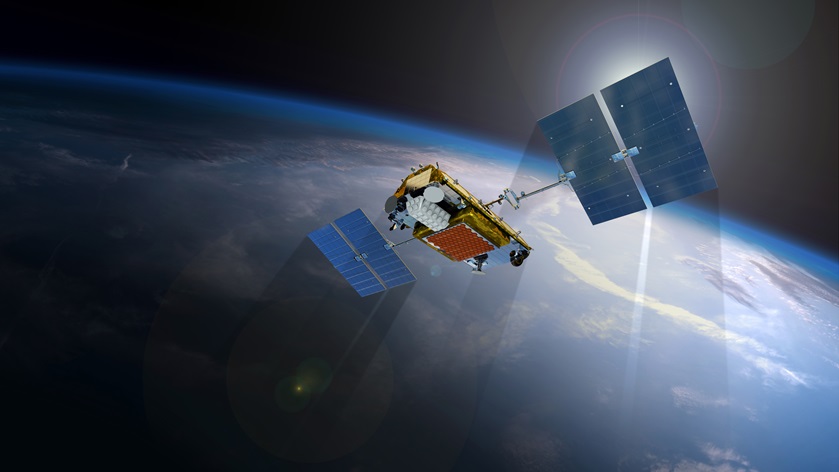Canada ADS-B mandate delayed
Industry learning more about space-based capabilities
With the FAA’s ADS-B Out mandate less than seven weeks away, the industry is learning more about the capabilities and limitations of space-based ADS-B—including that Nav Canada has postponed its ADS-B Out mandate.

Canada’s air navigation service provider in January revealed that as early as January 2021, it would require 1090-MHz extended squitter (1090ES) ADS-B Out with antenna diversity, meaning top and bottom transponder antennas, to facilitate data reception by satellites.
But the postponement, announced November 13, will not change the Canadian air navigation service provider’s reliance on the Aireon space-based ADS-B system, and is not likely to amend the requirement for an upward-pointing antenna. It’s reacting to an October 21 letter from Transport Canada, which told Nav Canada that because some operators will not be able to meet the implementation timeline, “until the proper regulation is in place and in force, Nav Canada will have to accommodate air operators…as per current regulations and practices.” In other words, the ADS-B performance requirements must go through a rulemaking process, which the industry sought in March.
“We’re still exploring what might be possible with space-based ADS-B, but it is clear that there could be considerable compatibility issues for the majority of general aviation,” said Rune Duke, AOPA senior director of airspace, air traffic, and aviation. “Aireon’s system is doing as it was designed. It is an effective solution for high-altitude, offshore, non-domestic airspace where there is a lack of surveillance and a high percentage of diversity-equipped aircraft, like airliners and business aviation. Besides the antenna reception concerns, general aviation is also looking for FIS-B and TIS-B benefits that are reliant on a ground-based ADS-B network.”
The FAA has indicated satellite-based ADS-B may be the next step in ADS-B’s evolution, enabling surveillance across the globe. The agency said it’s taking a phased approach that will address technical, operational, and safety issues before committing to a long-term investment in the technology. It is focusing on some key data update rates, and research supported by AOPA so far shows that aircraft with antennas only on their bellies have signal reliability concerns. The FAA noted that most samples were below Flight Level 180 and beneath the proposed altitude floor for space-based ADS-B, and said the critical service specification requirement might need to be adjusted because of bottom-mount antennas and possible avionics issues.
“We are continuing to work with the FAA, other air navigation service providers, and our industry partners to further explore general aviation’s compatibility concerns with space-based ADS-B,” Duke said. “We do not expect concrete answers before the FAA’s mandate takes effect in 2020.”
An operational evaluation of space-based ADS-B in the Caribbean—chosen largely because of reliability issues with the Grand Turks radar—could lead to use of space-based ADS-B in oceanic airspace controlled by the FAA’s Miami, New York, and other air route traffic control centers.
Other air navigation service providers also are looking at space-based ADS-B. COCESNA, the Corporación Centroamericana de Servicios de Navegación Aérea—which provides air navigation services for Belize, Costa Rica, El Salvador, Guatemala, Honduras, and Nicaragua—is evaluating space-based ADS-B as a source of surveillance information to complement existing radar systems. However, COCESNA also is interested in becoming the service provider for a large, no-flight-information region—where air traffic services currently are not available—above the Pacific Ocean, well west of Central America.
Some diversity solutions are available for lighter GA aircraft. In March, Garmin introduced diversity versions of its GTX 335 and GTX 345 ADS-B Out transponders. The Garmin GTX 33D ES and GTX 330D ES, and the L3 Commercial Aviation Lynx NGT-9000, also support antenna diversity. (Non-diversity GTX 33 ES and GTX 330 ES models can be converted at the factory to include antenna diversity; a software unlock adds the capability to non-diversity NGT-9000s. However, existing GTX 335 and GTX 345 transponders cannot be upgraded, and would have to be replaced.)
The FAA has mandated ADS-B Out equipage for flights after January 1, 2020, in U.S. airspace where a transponder is required today. In addition to 1090ES, the FAA provides the option for ADS-B Out on the 978-MHz universal access transceiver frequency. However, 1090ES is the only international standard, and to date no other countries have embraced use of the UAT datalink. The Aireon satellites can receive only 1090ES ADS-B data.



